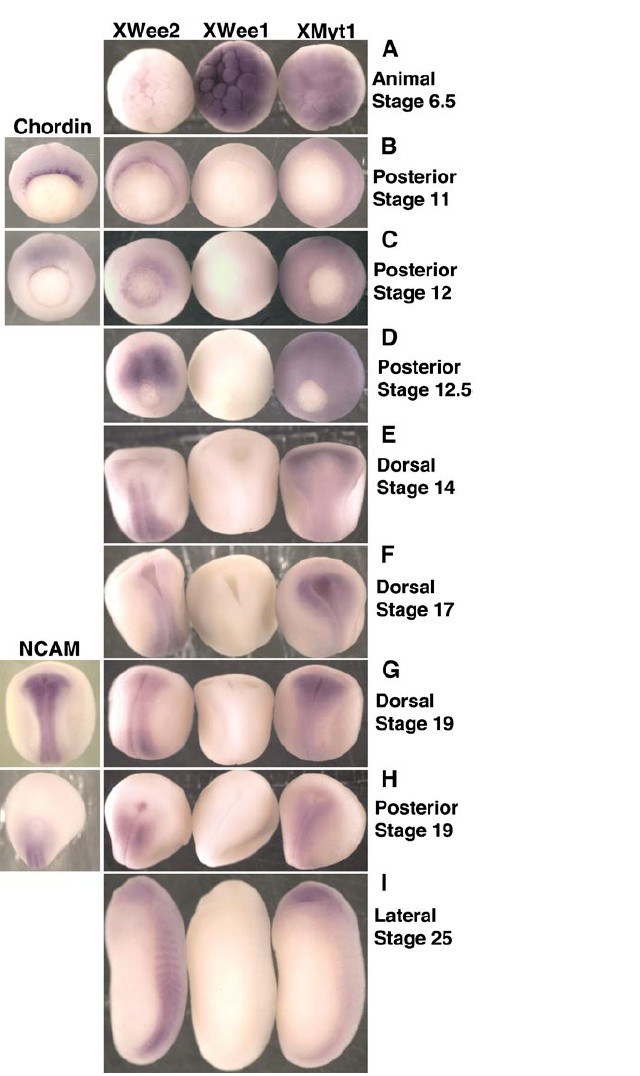
FIG. 6. Whole-mount in situ hybridization of Xenopus embryos show that each Wee kinase has a specific spatial and temporal developmental profile. Xenopus embryos were staged according to Nieuwkoop and Faber (1994), fixed, and subject to in situ hybridization for the Wee kinases (XWee2, XWee1, or XMyt1) (Aâ I), the dorsal mesoderm marker Chordin (B, C), or the neural marker NCAM (G, H). View and stages for each embryo are as indicated. See text and Materials and Methods for details.
Image published in: Leise W and Mueller PR (2002)
Copyright © 2002. Image reproduced with permission of the Publisher, Elsevier B. V.
| Gene | Synonyms | Species | Stage(s) | Tissue |
|---|---|---|---|---|
| wee2 | wee1b, xwee2 | Xenopus | Throughout gastrula stage | blastopore lip dorsal posterior |
| myt1 | X-MyT1, xmyt1, XMyTI | Xenopus | Throughout neurula stage | dorsal anterior neural fold neural plate |
| myt1 | X-MyT1, xmyt1, XMyTI | Xenopus | Throughout NF stage 10 to NF stage 12.5 | surface structure embryo |
| chrd | chd, chordin, chrd.1, LOC108716939, X-chordin | Xenopus | Sometime during NF stage 11 to NF stage 12 | dorsal mesoderm |
| wee2 | wee1b, xwee2 | Xenopus | Throughout NF stage 13 to NF stage 21 | dorsal blastopore |
| wee2 | wee1b, xwee2 | Xenopus | Throughout NF stage 25 | somite dorsal |
| myt1 | X-MyT1, xmyt1, XMyTI | Xenopus | Throughout NF stage 25 | eye dorsal anterior neural tube |
| wee1 | wee1a | Xenopus | Throughout NF stage 6.5 | animal hemisphere |
Image source: Published
Permanent Image Page
Printer Friendly View
XB-IMG-42101